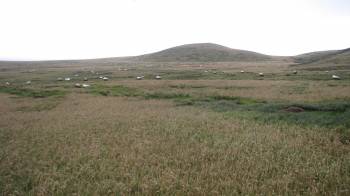The e-Atlas of Marine Important Areas (mIBAs) was launched by BirdLife International last week at the Eleventh Conference of the Parties (COP11) to the Convention on Biological Diversity (CBD), in Hyderabad, India, held over 8-19 October. The e-Atlas covers 3000 mIBAs worldwide.
"Many seabird species are spectacularly mobile, travelling thousands of kilometres across international waters and multiple Exclusive Economic Zones and only return to land to breed. They face many serious conservation challenges and are now the most threatened group of birds. Given the long periods that seabirds spend at sea, the multiple threats they face there and the vast distances they cover, identifying a network of priority sites for their conservation is a challenge - but vital to ensure their future survival. BirdLife International's Important Bird Areas (IBA) programme identifies the most important sites for site-based conservation efforts. To date, over 10,000 IBAs have been identified globally. The programme has been used to set conservation priorities in terrestrial environments for over 30 years, and unprotected IBAs have been used as ‘shadow lists' of sites for recognition under various agreements. Since 2004 the BirdLife Global Seabird Programme has been working with the BirdLife Partnership to identify IBAs for seabirds both on land and at-sea."

Albatross Valley with breeding Wanderers on Prince Edward Island in the southern Indian Ocean:
part of a terrestrial IBA
Photograph by John Cooper
It is intended that the e-Atlas will be updated as new sites are identified and new data about them become available. The atlas will be linked to other BirdLife data resources, including species accounts and IBA fact sheets. Many of the identified mIBAs are important foraging areas for ACAP-listed albatrosses, petrels and shearwaters.
Click here to read more about the mIBA inventory.
John Cooper, ACAP Information Officer, 22 October 2012
NOTE: A technical problem is currently stopping the placement of images within items posted to ACAP Latest News. It is hoped to resume the use of illustrations as soon as possible - and to add images to recent stories that do not have them. Thank you for your patience.

 English
English  Français
Français  Español
Español